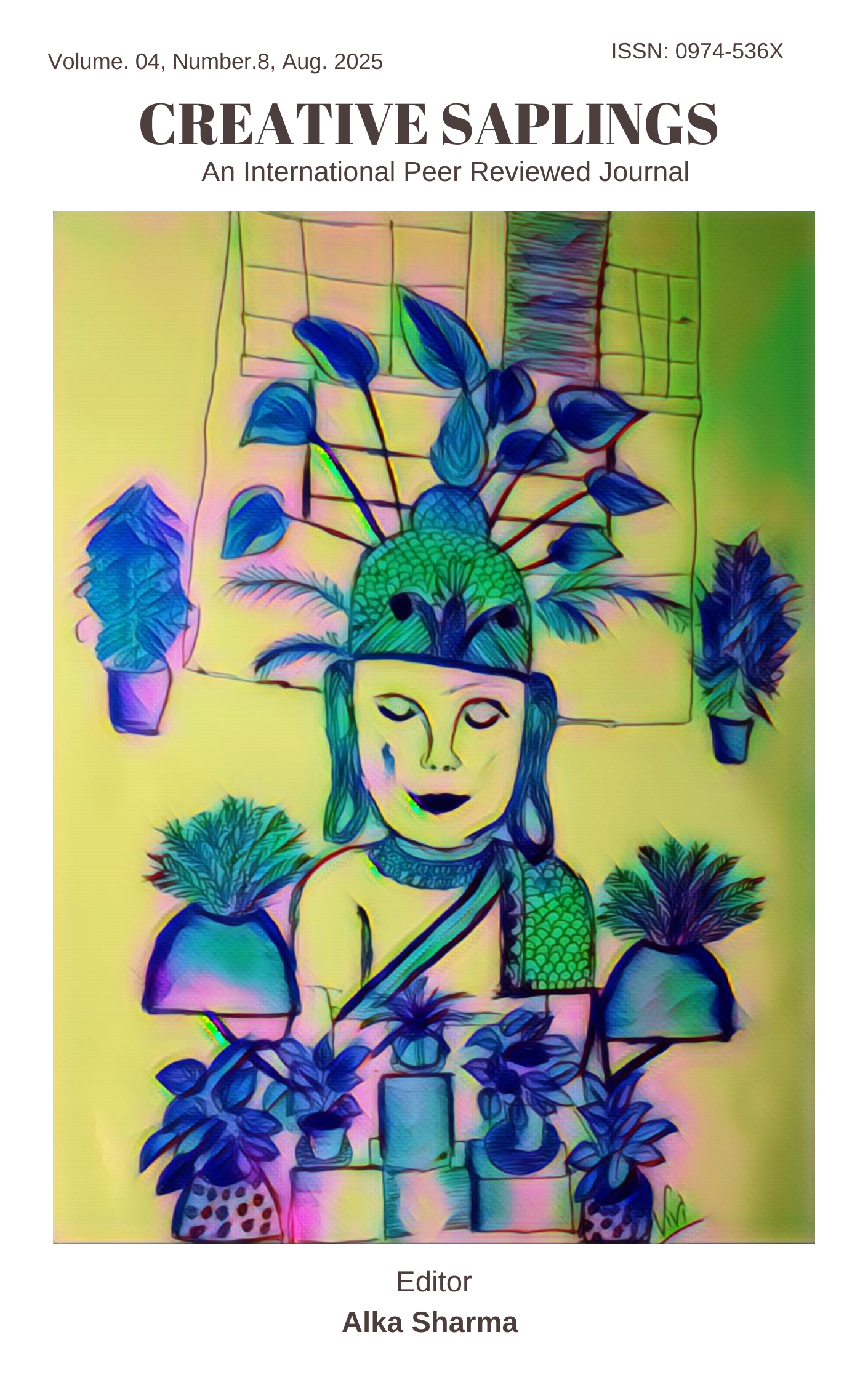The Portrayal of Subjective Anguish, Forfeiture, Veracity, Affection and Conviction in Namita Gokhale’s The Book of Shadows
DOI:
https://doi.org/10.56062/gtrs.2025.4.08.958Keywords:
Veracity, affection, conviction, personal grief, loss, mental pain, loneliness, self-identityAbstract
Namita Gokhale is a distinguished short story writer and suffragette novelists in Indian Writing in English. She was born at Lucknow, Uttar Pradesh in the year 1956. She completed her education in English Literature from Jesus College and Mary College, Delhi. Gokhale surpasses her characters to bridge a gap between Indian writing in English and provincial languages. She has written nineteen books which consists of short stories, fictions and non-fictions. Being a feminist writer, she delineates women’s pain of seclusion, corporal disorder, conceptual heaviness, discomforts, sentiments, moods and perceptions. She reflects the excruciating life for a woman, her painful experiences and her quest for survival.
The foremost purpose of this research paper is to showcase the personal grief and loss, veracity, affection and conviction in Namita Gokhale’s well-known novel The Book of Shadows. She portrays herself as a protagonist, an acid attack survivor, looser of her love and an alienated entity. Rachita, the protagonist of the novel, serves as a replica of Namita Gokhale. Rachita suffers all the oddities and being an emancipated woman, she finds solitude in the Himalayan hills as she spends her childhood there. She searches to fill the void in order to find true comfort.
Downloads
References
Agarwal, S., et al. “Namita Gokhale's The Book of Shadows: A Psychoanalytical Analysis.” MIT International Journal of English Language and Literature, 2014, pp. 41–50.
Bhagdikar, Vandana. Fiction of Namita Gokhale. Prestige Books International, 2015.
Chhikara, Harshita. “Namita Gokhale’s The Book of Shadows: A Critical Study of the Protagonist Rachita.” NJESR, vol. 2, no. 1, June 2022, pp. 16–19.
Ghanashyam, G. A., et al. Women Relationships and Rebellion. Book Enclave, 2013.
Gokhale, Namita. The Book of Shadows. Penguin Books India, 2001.
Jung, C. G. Aspects of the Feminine. Routledge and Kegan Paul, 1982.
Priyadarshini. “Women towards the Corporal Illness: Feminism Based Study on Namita Gokhale’s The Book of Shadows.” Bodhi International Journal of Research in Humanities, Arts and Science, vol. 3, no. 2, Jan. 2019.
Rani, U., et al. “Images of Women in Namita Gokhale's Works.” International Journal of Trend in Scientific Research and Development, 2018, pp. 480–84. DOI: https://doi.org/10.31142/ijtsrd19007
Sarathkumar, R., et al. “Feminism in Namita Gokhale’s The Book of Shadows.” Changing Paradigms in Cultural Context of Literature, Nov. 2023.
Tiwari, Sandhya. “Transfiguration and Transformation in Namita Gokhale’s The Book of Shadows.” Sahityasetu, no. 2, Mar.–Apr. 2020.
Downloads
Published
License
Copyright (c) 2025 Dr. Kamalakar Baburao Gaikwad Dr. Kamalakar Baburao Gaikwad

This work is licensed under a Creative Commons Attribution-NonCommercial 4.0 International License.





